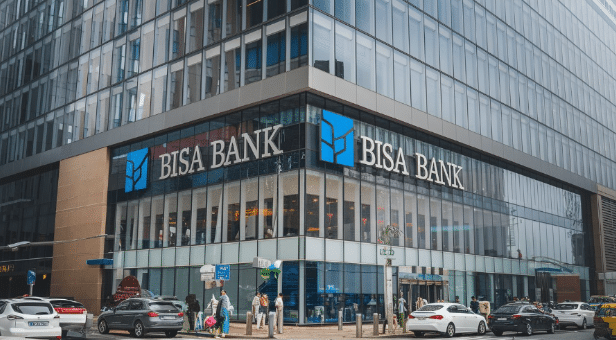Bolivians can now buy, sell, or even hold USDT in the traditional banking system for the first time, creating perhaps new pathways for remittances and cross-border transactions. Among the country’s largest private financial institutions, Bisa Bank has rolled out a full suite of services involving the USDT (Tether) stablecoin. The growing demand for digital assets in Bolivia is being driven by dollar scarcity and economic pressures.

The launch of Bisa Bank now makes it the first Bolivian bank to offer a stablecoin in its product offerings, marking a major development in the direction Bolivia has been taking towards cryptocurrency. Drawing on already existing stablecoin USDT (pegged to the US dollar), Bolivian users can store and transfer value in a way that’s linked directly to the stability of the dollar, a key asset during risky cryptocurrency summers like Bitcoin and Ethereum.
Bisa Bank Partners with ASFI for Secure Digital Asset Management

Bisa Bank is joining ASFI to demonstrate it’s a more secure, trusted way to approach dollar-pegged digital assets that aren’t USDT, according to Bolivia’s banking watchdog ASFI (ASFI) president Yvette Espinoza. According to Espinoza, this product launch is a bridge between traditional banking and the fast-growing world of digital assets. “That’s what it provides Bolivians: a way to manage their finances without the risk of fraud or transparency, other than the bonus of having a secure, stable asset, while local economic pressures exist.”
“This is a custody service that will allow clients to carry out various operations safely, reducing the risk of unsafe interactions in the cryptocurrency market,” Espinoza stated.
Specific transaction fees from $5 to $15 for stablecoin purchases have been introduced by the bank, with daily purchase limits ranging from 200 to 10,000 USDT per day. But for cross-border transfers, users will roughly have to pay about $40, something that many consider competitive with other international payment methods.
Bisa Bank Vice President of Business Franco Urquidi noted that customer security is pivotal during these operations, and all USDT-related operations will be executed solely inside the bank’s accounts. “In our customers, we have a very rigorous verification process that verifies the secure, compliant, transparent transactions,” he said. Secondly, “this allows us to provide comfort to our clients, that their funds are protected by trustworthy channels.”
Urquidi’s assurances highlight a critical component of this initiative: trust. Through its regulated banking services, Bisa Bank joins the list of stablecoin companies that successfully merged the blockchain technology with the traditional banking services providing therefore a safe infrastructure for these transactions while signaling at the same time a step towards bridging the gap between the traditional banking and the digital asset market.
Stablecoins Key to Stabilizing Bolivia’s Economy and Access

The adoption of stablecoin in Bolivia can also be traced to a larger economic set of circumstances. The country has had a fixed exchange rate with the US dollar for a long time, but more recently, dollar scarcity has been a growing concern. Inflation also raised concerns that the Bolivian local market might be vulnerable to speculative pressures, so last year, the Central Bank of Bolivia took an unusual step and began selling US dollars directly to the public.
The Bolivians use stablecoins like USDT for a limited dollar access and get value retention in dollar linked digital assets that abide by the regulations. Bolivia’s crypto and stablecoin transactions hit a peak since June’s crypto ban lift, thanks to double trading volumes as interests grow quickly.
Bisa Bank’s stablecoin entry is more than just another product in the bank’s expanding stablecoin line, but an underlying fundamental change to the way digital assets are emerging in the Bolivian financial ecosystem. Stablecoins are poised to be key in stabilizing the economy through dollar access in a region where this currency is fiercely desired.
Bolivians are now able to access secure, accessible stablecoin options for transactions and remittances through Bisa Bank’s USDT integration. Bolivia’s approach presents itself as a model for Latin America, as it combines traditional banking with digital asset and meets growing demand for stablecoins. This innovation seeks to increase financial resilience in the face of economic challenges, enabling Bolivians to move more fully into the global economy.
Conclusion
Opening the doors to USDT services positions Bisa Bank as a crucial step within Bolivia’s financial sector, where stablecoin transactions become easier by way of a secure access channel. Supporting Bolivians’ need for dollar-linked assets that are stable in their face value, this move coincides with digital finance on the rise in the region.
Stay tuned to TheBITJournal and keep an eye on Crypto’s updates. Follow us on Twitter and LinkedIn, and join our Telegram channel to be instantly informed about breaking news!




























